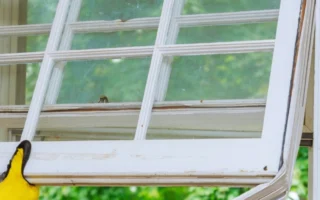Fitting a screen to your window frame can transform your living space. It brings in fresh air while keeping out pesky insects and debris. When you take the time to measure accurately and choose the right materials, you’ll find that installing a screen is well worth the effort. You opt for a DIY approach or hire professionals; having clear steps will guide you through the process smoothly. Being mindful of common pitfalls ensures that your installation goes off without a hitch. Once everything is set up, sit back and enjoy your newly fitted screen. The perfect blend of comfort and functionality can make all the difference in how you experience your home environment.
Measuring the window frame: Tips and tricks

Measuring your window frame accurately is crucial for a perfect screen fit. Start with a reliable tape measure. A cloth or metal tape works best, as it can easily bend to the contours of your frame. Measure the width and height at three points: top, middle, and bottom for width; left, center, and right for height. This will help you capture any inconsistencies in the frame. It’s common for windows to be slightly uneven.
Take note of the smallest measurements you find. This ensures that your screen will fit snugly without forcing it into place. If you’re installing an exterior screen, measure the outside edge of the frame. That way, you’ll account for any overhangs or extensions needed. Always double-check your measurements before making cuts or purchases. This small step saves time and materials later on!
Choosing the right material for your screen
When choosing the right material for your screen, you have several options. A popular choice due to its durability and resistance to rust is fiberglass. It allows good airflow while keeping insects at bay.
Another option is aluminum, which offers strength and longevity. It’s lightweight yet sturdy, making it suitable for larger window frames. However, be mindful that aluminum can dent easily. For those looking for something more customizable, specialized polyester screens are available. They come in various colors and styles but may not be as durable as metal choices.
DIY vs. professional installation

When it comes to fitting a screen to your window frame, the decision between DIY and professional installation can be crucial. DIY offers flexibility and cost savings. You control the process, from measuring to selecting materials. Plus, there’s a certain satisfaction in completing a project on your own. This route requires time and patience. Hiring professionals ensures precision. Their experience and tools allow them to do the job more quickly and easily. This choice often leads to better results but at a higher price point.
Check your skill level before diving into a DIY project. If you’re hands-on, handy with tools, and confident in your ability, tackling it yourself could be rewarding. But calling in an expert might save headaches for those needing help with their skills or who are under time constraints. The choice ultimately depends on what you value more: effort or expertise.
Step-by-step guide to fitting a screen to a window frame
- Start by gathering your materials. You’ll need a screen, mounting hardware, and basic tools like a screwdriver and scissors.
- Next, ensure the window frame is clean. Dust or debris can affect how well the screen fits.
- Carefully measure the dimensions of your window frame. Double-check these measurements to avoid mistakes later on.
- Cut the screen material according to your measurements. Leave an extra inch on each side for adjustments during installation.
- Position the screen over the frame. Align it carefully so it rests evenly across all edges.
- Using screws or clips from your mounting kit, secure the screen in place. Make sure it is not overly tight; this prevents warping.
- Test its fit by gently pushing against it. The right installation should allow for easy opening without compromising security or integrity.
Common mistakes and how to avoid them

Several common mistakes can derail your efforts when fitting a screen into your window frame. One frequent error is mismeasuring the dimensions. Make sure your measurements are accurate before cutting any material.
A pitfall needs to use a different type of mesh or material. Not all screens are created equal; consider factors like durability and climate when choosing. Improper installation techniques can lead to gaps that allow pests in. Ensure you follow guidelines closely and use appropriate fasteners for a snug fit.
Failing to account for the window’s opening mechanism might also be an issue, leading to obstruction during operation. Be mindful of how the screen will interact with existing hardware. Neglecting maintenance can shorten a lifespan. Inspect for tears or wear, and clean it periodically to keep it functional and looking good.




